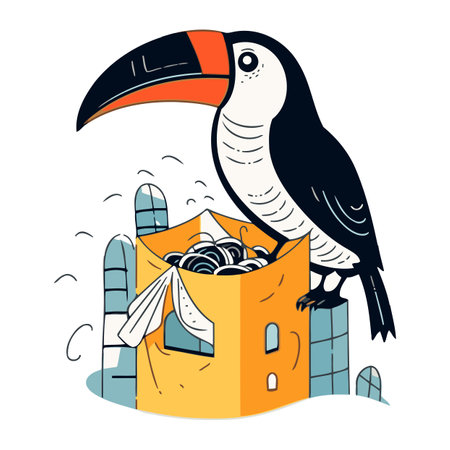1. Understanding Your Bird’s Past Trauma
When adopting a rescue or previously abused bird, it’s important to recognize that their past experiences greatly influence their behavior and trust in humans. Many of these birds have endured neglect, improper handling, or even mistreatment, leading to deep-seated fears and defensive reactions.
Recognizing Signs of Past Trauma
Birds express their emotions through body language, vocalizations, and behavior. Understanding these signals can help you gauge their comfort level and identify signs of past trauma.
| Behavior | Possible Cause |
|---|---|
| Biting or lunging | Fear of human hands due to past rough handling |
| Puffing up feathers when approached | A defensive reaction from feeling threatened |
| Repeated screaming | Anxiety or learned response from being ignored or stressed |
| Avoiding eye contact or turning away | Lack of trust and fear of interaction |
| Feather plucking | A sign of extreme stress or past neglect |
The Impact of Neglect and Abuse
A bird that has been neglected may have never experienced positive human interaction. They might not understand that humans can provide safety, food, and companionship. Abused birds, on the other hand, may associate people with pain or fear, making it difficult for them to relax around new caregivers.
The Importance of Patience
Your bird needs time to unlearn fear-based behaviors and replace them with trust. Every bird heals at its own pace—some may take weeks, while others may need months or even years to feel secure again. The key is consistency, patience, and understanding.
Create a Safe Environment
A safe environment is crucial for helping your bird feel secure. Keep their cage in a quiet area where they can observe without feeling overwhelmed. Avoid sudden movements and loud noises that could trigger fear responses.
2. Creating a Safe and Stress-Free Environment
Providing a secure and comfortable space is essential for helping a rescue or previously abused bird feel safe. A well-thought-out environment can reduce stress, build trust, and encourage positive behavior.
Proper Cage Placement
The location of your bird’s cage plays a crucial role in their sense of security. Follow these guidelines to ensure an ideal placement:
- Avoid high-traffic areas: Place the cage in a quiet room where your bird won’t be overwhelmed by constant movement or noise.
- Provide a sense of security: Position the cage against a wall so your bird feels protected on one side.
- Ensure natural light exposure: Choose a spot with indirect sunlight but avoid direct sun exposure that could overheat your bird.
- Maintain stable temperatures: Keep the cage away from air vents, drafts, or extreme temperature changes.
Selecting the Right Perches
Perches are essential for your bird’s comfort and foot health. A variety of perches will help prevent foot fatigue and provide mental stimulation.
| Type of Perch | Benefits |
|---|---|
| Natural Wood Perches | Mimic branches found in nature, promoting foot exercise and grip strength. |
| Rope Perches | Softer on feet and flexible, reducing pressure points. |
| Cement or Pumice Perches | Aid in keeping nails trimmed but should be used sparingly to prevent foot irritation. |
| Dowel Perches (Limited Use) | Smooth texture can cause foot problems if used exclusively; mix with other perch types. |
Add Enrichment for Comfort and Mental Stimulation
A rescue bird may have experienced neglect, so providing enrichment is key to rebuilding confidence. Consider these enrichment ideas:
- Toys: Offer different textures such as wood, paper, and rope to encourage natural foraging instincts.
- Foraging Activities: Hide treats in small containers or inside shreddable toys to engage their mind.
- Mild Background Noise: Soft music or gentle talking can make them feel less alone without overwhelming them.
- A Hideaway Spot: Adding a corner cover or a small tent-like structure allows them to retreat when feeling stressed.
Create a Calm Atmosphere
Your actions greatly impact your bird’s sense of security. Speak softly, move slowly around their space, and establish a consistent routine. This predictability helps them feel more at ease and willing to trust you over time.
A well-structured environment provides the foundation for trust-building. Once your bird feels safe in their space, they’ll be more receptive to training and socialization.

3. Building Trust Through Patience and Positive Reinforcement
Rescue or previously abused birds often take time to feel safe in their new environment. The key to rebuilding trust is using gentle interactions, consistency, and rewards-based training. By approaching training with patience and a positive mindset, you can help your bird develop confidence and a sense of security.
Use Gentle Interactions
For a bird that has experienced trauma, sudden movements or loud noises can be frightening. Approach your bird calmly and speak softly to create a peaceful environment. Let them observe you from a comfortable distance before attempting direct interaction.
Tips for Gentle Interactions:
- Move slowly and avoid sudden gestures.
- Use a calm, reassuring voice when speaking to your bird.
- Allow your bird to come to you instead of forcing interaction.
- Avoid direct eye contact for extended periods, as this can feel threatening.
Be Consistent with Your Training Approach
Consistency helps your bird understand what to expect, reducing stress and building confidence. Establishing a routine for feeding, socializing, and training sessions will help them feel more secure in their new home.
Daily Routine Example:
| Time of Day | Activity |
|---|---|
| Morning | Quiet greeting and feeding |
| Midday | Short training session with positive reinforcement |
| Afternoon | Free-flight or out-of-cage time (if comfortable) |
| Evening | Sit nearby while talking softly or reading aloud |
Reward-Based Training for Trust Building
Your bird will respond best to positive reinforcement techniques. Using treats, praise, or favorite toys can encourage good behavior and make training an enjoyable experience.
Types of Positive Reinforcement:
- Treats: Use small pieces of fruit, seeds, or other favorite snacks as rewards.
- Praise: Gentle verbal encouragement like “Good job!” in a soothing tone.
- Toys: Offer a favorite toy after successful interactions.
- Affection: Some birds enjoy head scratches or gentle petting once they are comfortable.
The Importance of Patience
Your bird may take weeks or even months to fully trust you. Avoid rushing the process—forcing interactions too soon can set back progress. Celebrate small milestones, such as your bird willingly stepping onto your hand or showing curiosity instead of fear.
4. Establishing a Routine for Comfort and Security
Rescue or previously abused birds often feel anxious in new environments. One of the best ways to help them feel safe is by establishing a consistent daily routine. Birds thrive on predictability, and having set times for feeding, play, and interaction can significantly reduce their stress levels.
Why Routine Matters
Birds are creatures of habit. When they know what to expect, they feel more secure and less likely to display fearful or aggressive behaviors. A structured routine helps them understand that they are in a safe place where their needs will be met consistently.
Building a Daily Schedule
A well-planned daily schedule should include designated times for essential activities like feeding, playtime, and social interactions. Below is an example of a simple daily routine for your bird:
| Time | Activity | Purpose |
|---|---|---|
| 7:00 AM | Morning Feeding | Provides nourishment and sets the tone for the day. |
| 9:00 AM | Cage Cleaning & Fresh Water | Keeps their environment clean and comfortable. |
| 11:00 AM | Interactive Playtime | Encourages bonding and mental stimulation. |
| 2:00 PM | Quiet Time / Rest | Lowers stress levels and allows relaxation. |
| 5:00 PM | Dinner Feeding & Social Time | Makes mealtime enjoyable with positive interaction. |
| 8:00 PM | Nesting/Bedtime Preparation | Cues your bird that its time to settle down for sleep. |
Tips for Sticking to a Routine
- Be Consistent: Try to stick to the same schedule every day so your bird knows what to expect.
- Avoid Sudden Changes: Gradual adjustments are better than abrupt shifts, which may cause stress.
- Create Positive Associations: Use treats or gentle words to make scheduled activities enjoyable.
- Pace Interactions Based on Comfort: If your bird is still hesitant, allow them time to adjust at their own speed.
The Impact of a Stable Routine on Trust Building
A structured routine reassures your bird that they are safe and cared for. Over time, as they become familiar with the schedule, they will begin to trust you more. This consistency helps rebuild confidence, making training sessions smoother and strengthening your bond with them.
5. Recognizing Progress and Adjusting Training Techniques
Training a rescue or previously abused bird takes time, patience, and careful observation. As your bird starts to show signs of trust and comfort, its important to recognize these changes and adjust your training techniques accordingly. By monitoring their progress and making necessary adaptations, you can continue building a strong bond with your feathered friend.
Signs That Your Bird Is Gaining Trust
Every bird expresses trust differently, so its essential to look for subtle changes in behavior that indicate progress. Below are some common signs that your bird is becoming more comfortable:
| Sign of Trust | Description |
|---|---|
| Relaxed Body Language | Your bird fluffs its feathers, preens itself near you, or lowers its head. |
| Willingness to Take Treats | Your bird starts accepting treats from your hand without hesitation. |
| Curiosity and Engagement | Your bird moves closer to you, watches you attentively, or mimics sounds. |
| Vocalization | Soft chirping or talking in your presence shows they are feeling safe. |
| Comfortable Perching Near You | Your bird willingly sits on your hand, shoulder, or nearby perches. |
Adapting Training Methods Based on Progress
As your bird becomes more comfortable, you may need to adjust your training techniques. Here are a few ways to modify your approach:
- Increase Interaction Gradually: If your bird is showing trust, try spending more time near them or introducing new gentle interactions.
- Introduce New Training Steps: Once they are comfortable with basic interactions, start working on simple commands like “step up” or target training.
- Avoid Rushing the Process: Even if progress is steady, pushing too fast can cause setbacks. Let your bird dictate the pace.
- Use More Positive Reinforcement: If they respond well to certain rewards (treats, praise, or toys), incorporate these more into training sessions.
- Create a More Engaging Environment: Providing different perches, toys, and activities can encourage further confidence-building.
Celebrating Small Victories
Every little step forward is a big achievement for a rescue or previously abused bird. Celebrate their progress by reinforcing positive behavior with rewards and affection. Recognizing their efforts will help strengthen the bond between you and your bird while ensuring they continue to feel safe and secure in their new home.
How to Celebrate Progress Effectively
- Offer Their Favorite Treats: Rewarding them immediately helps reinforce good behavior.
- Praise with a Soft Voice: Gentle words of encouragement can reassure them of their success.
- Add Enrichment Activities: Introduce new toys or playtime as a form of reward.
- Respect Their Comfort Zone: If they enjoy personal space after training, allow them time to relax without pressure.
Final Thoughts on Recognizing Progress
The key to training a rescue or previously abused bird is patience and adaptability. By monitoring signs of trust, adjusting training techniques as needed, and celebrating even small milestones, you’ll create an environment where your bird feels truly safe and loved. Keep observing their cues and always prioritize their comfort throughout the journey.


